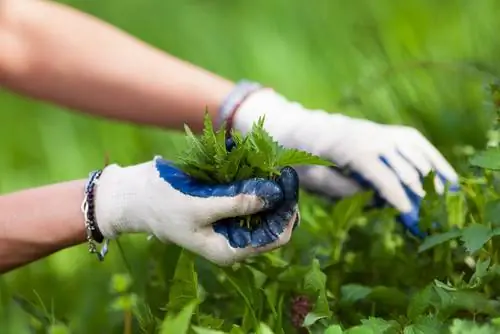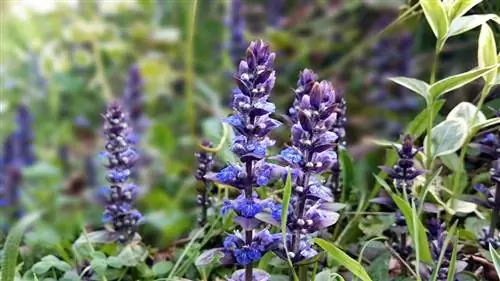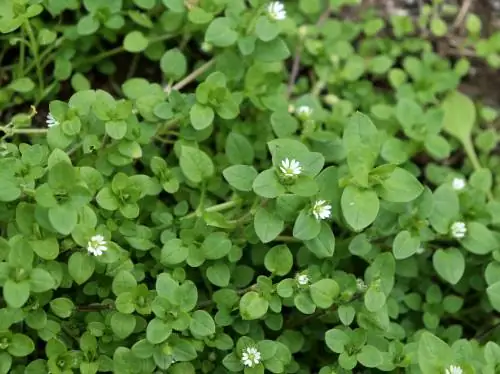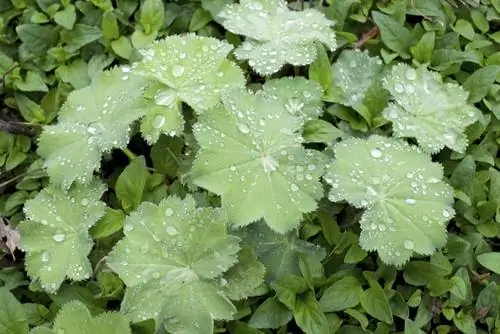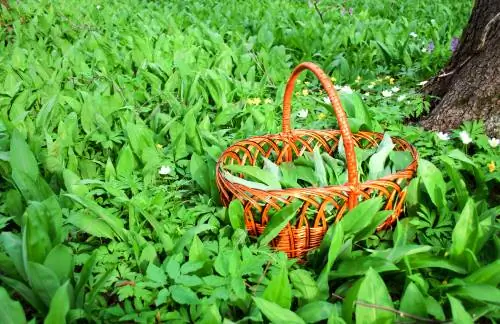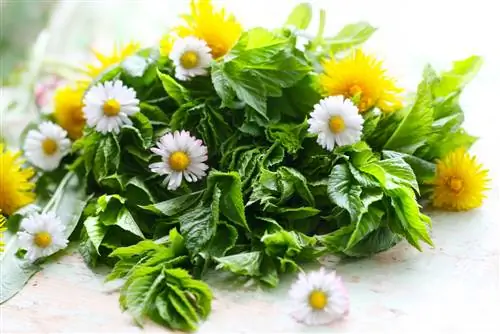- Author admin [email protected].
- Public 2023-12-25 17:45.
- Last modified 2025-01-23 11:21.
In April, the green of nature awakens as if by magic within a few days. Delicate plants sprout on every corner. The sight of them is often familiar to us. But only a few people know how they can enrich their dishes with this gift of nature. The following list should help those who are curious.
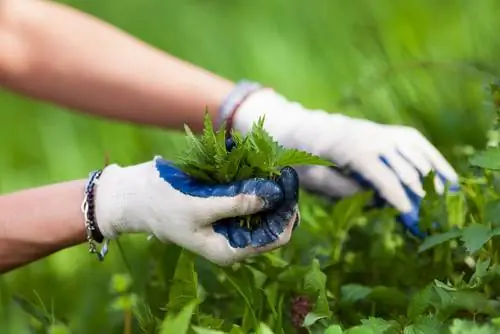
Which wild herbs can you collect and eat in April?
In April, the following wild herbs are edible and enrich your dishes: wild garlic, broadleaf plantain, nettle, daisies, groundweed, ground gunder, garlic mustard, dandelion, yarrow and chickweed. They offer valuable ingredients and a variety of flavors for salads, pestos and more.
Wild garlic
The wild garlic tastes clearly of garlic and sometimes a bit spicy. When used in good doses, the spicy herb enriches many dishes. It is especially a blessing in pestos, as it retains all of its valuable and healing ingredients when raw. Among other things, wild garlic has the following to offer:
- Vitamin C
- Potassium
- Manganese,
- Leek oils and
- other essential oils
Note:Wild garlic can be confused with two poisonous wild herbs: lily of the valley and autumn crocus. Find out about the differentiating features in good time.
Broad plantain
The young leaves are soft and can be eaten both cooked and raw. Its young flower stalks can be prepared like asparagus. It can usually be found on roadsides.
Stinging Nettle
If you lose your fear of stinging hairs or protect yourself accordingly, you shouldn't skip the nettle in April. Due to its healing ingredients, experts consider it to be one of the most valuable edible wild herbs.
Daisies
Everyone knows the little daisies. But not everyone knows how good they taste. Leaves and flowers can be used as a salad ingredient. Just make sure the daisy grows in a “clean” spot.
Giersch
Greedweed is ineradicable and that's a good thing. Everywhere in nature it finds a suitable habitat for itself. Mostly on the edges of forests under trees. It also likes to spread into private gardens. The leaves can be prepared like spinach. However, they taste more like carrots and parsley.
Gundermann
The Gundermann, also known as Gundelrebe, used to be a frequent guest on our diet. It was a must when collecting wild herbs because it was both a medicinal and a seasoning herb. That's why it is often referred to as 'wild parsley'. Leaves, shoots and flowers may be collected.
Garlic mustard
It has a subtle garlic aroma hidden in its leaves. Ideal for garlic lovers who cannot tolerate the original bulb. The entire plant is edible. It goes well in salads, herb quark, soups, sauces or pestos.
Tip
In small quantities, garlic mustard is also a great and he althy ingredient for green smoothies.
Dandelions
The dandelion may be the most famous wild herb that grows in this country. With its yellow flowers it is a pleasing sight. But these flowers can be eaten, as can the green leaves. In April they are particularly tender and mild.
Yarrow
Freshly sprouted leaves are a delicacy in salads. Yarrow is widespread in nature and can be collected. But it can also be cultivated in the garden.
chickweed
The chickweed has a mild taste and is said to be ideal as a salad. Either pure or combined with other salad ingredients. It is often found in the garden, judged as a weed and pulled out.

